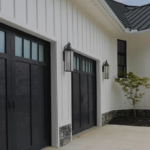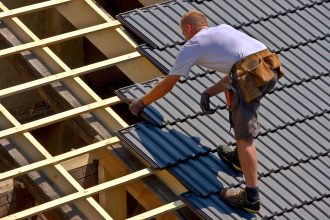Changes around the home no matter how small can make a significan impact on your living space, your bank account and the environment. Our home is our sanctuary, and we always want to adjust our home including furniture, and appliance according to our own convenience. Here are some home upgrades that can lead to major improvements.
Upgrade To LED Lighting
Replacing light bulbs from standard light bulbs to LED bulbs is probably the cheapest and one of the most simple and cost-effective changes you can apply to your home. LEDs use less energy, last longer, and emit less heat, making them ideal for any room in your home.
LED bulbs come in a bunch of colors and styles, so you can totally find the perfect match for your home’s vibe. Whether you’re into that warm, cozy yellow light or need some bright, white light for getting stuff done, there’s an LED bulb for you. Plus, a lot of LED bulbs can be dimmed now, so you have even more control over your home’s lighting.
Install A Programmable Thermostat
A programmable thermostat allows you to more accurately manage the temperature in your house and minimizing energy waste and utility expenditures. Set it to lower the temperature when you’re not home and to warm up right before you get back.
For even greater control a smart thermostat is a much better device. This device learns your schedule and preferences and makes the right temperature adjustments for your maximum comfort and efficiency. Some smart thermostats can also be controlled from anywhere with a smartphone app.
Improve Insulation
Proper insulation keeps your home warm in the winter and cool in the summer, decreasing the need for unnecessary heating and cooling. Consider adding insulation to your attic, walls, and floors to boost energy efficiency.
When upgrading your insulation, pay special attention to those areas where air leaks are common like around windows and doors. Sealing those air leaks with weatherstripping or caulk can further improve your home’s energy efficiency.
Use Water-Saving Fixtures
Going for the water-saving fixtures on faucets, showerheads, and toilets can save you up to 50% of your water usage. These fixtures are created in such a way as to maintain pressure while less water is being used, so getting these for your house will actually be a very wise investment. For instance, a low-flow showerhead can reduce water use by as much as 50% and still not sacrifice water pressure, while dual-flush toilets allow you to select either a full or partial flush based on the amount of waste.
In addition to conservation of water, these fixtures tend to conserve your utility dollars. This means that by the use of less water, you will not only pay a lesser amount of money for water but also reduce the amount of energy in heating water for showers and baths.
Install Ceiling Fans
These fans ought to be there to help in the circulation of air, hence reducing the dependency on the air conditioning in the summer and heating during winter. Choose best performing and most energy-saving rated fans. These ceiling fans create a cool breeze in the summer. On hot days, you can run ceiling fans at high speeds to give a wind-chill effect to the skin that allows you to set your thermostat a few degrees higher but feel equally comfortable. These ceiling fans can also be reversed to push down warm air from the ceiling during winter so that your home stays warm.
For the case of every room, make sure the ceiling fans are of the right size and style; there are huge rooms that might need more than one fan or a fan with a huge diameter, while others smaller rooms can be easily attended to using a smaller fan.
Upgrade Appliances
You can, of course, replace old, inefficient appliances with newer models that work more efficiently. Over the long run, it saves you money on utility bills, because Energy Star-rated appliances use less energy and water. For example, a refrigerator that has an Energy Star rating uses as much as 15% less energy than a standard model, while an energy-efficient washing machine uses as much as 25% less energy and 45% less water.
When shopping for any appliances, look for the Energy Star label and compare the amount of energy they use compared to other products in that same class. That alone can help reduce the energy amount that your home uses and keep your utility bills low.
Use Smart Power Strips
A smart power strip will turn power off to devices that are not in use and cut down on phantom energy use. Smart power strips are a simple improvement that will save you money and lessen the waste of energy. Many electronic devices, such as televisions or computers, may still consume power even when they are in the off position. Smart power strips can detect when these devices are not in use and cut off their power supply, preventing them from using energy unnecessarily.
These smart power strips also feature other facilities, such as surge protection and control from remote locations, for easy handling of the devices.
Upgrade To A Clean And Healthy Home
One of the most useful upgrades you can make for your home is to maintain a high level of cleanliness. A clean home not only looks better but also contributes to your overall well-being. A clean living environment can reduce stress, improve mental health, and create a more welcoming atmosphere for you and your family. Hiring professional cleaning services like Seattle’s Green Cleaning Fairy can help not only to upgrade your home but also your lifestyle.
Upgrading your home doesn’t have to be too expensive. By starting with small, manageable changes like cleaning regularly, you can gradually transform your home into a more sustainable, efficient, and enjoyable space. Each upgrade you make is a step toward a greener lifestyle, and the benefits will quickly add up, both in terms of cost savings and environmental impact.
Make A Recycling Station
Set up an area for recycling, where you can easily sort and dispose of waste materials. By doing this small activity, you could make a big difference toward lessening waste and encouraging sustainability. You need to start by designating a certain place in your home for recycling bins and labeling them properly for different types of materials: paper, plastic, glass, and metal.
Make the recycling station as convenient as possible so that everybody in your family can use it. A kitchen or a garage would be a good place to put the recycling container. If possible, add a composting bin for organic trash. Familiarity and frequency of contact with the recycling experience could help the process of change towards sustainable lifestyles.
Making these home improvements easily will definitely bring out a better, efficient, comfortable, and sustainable living space. Small changes lead to bigger results, making your home a much better place to live in. Besides just the improved functionality and aesthetics in your house, the quality of life significantly increases.














